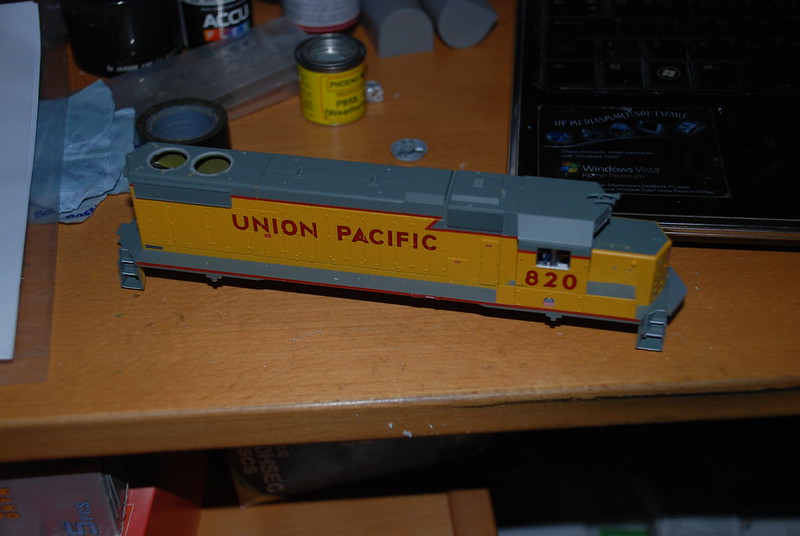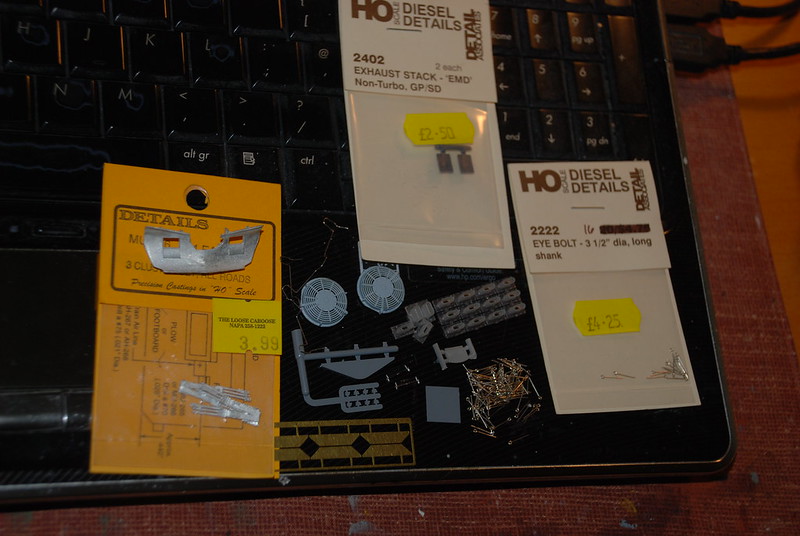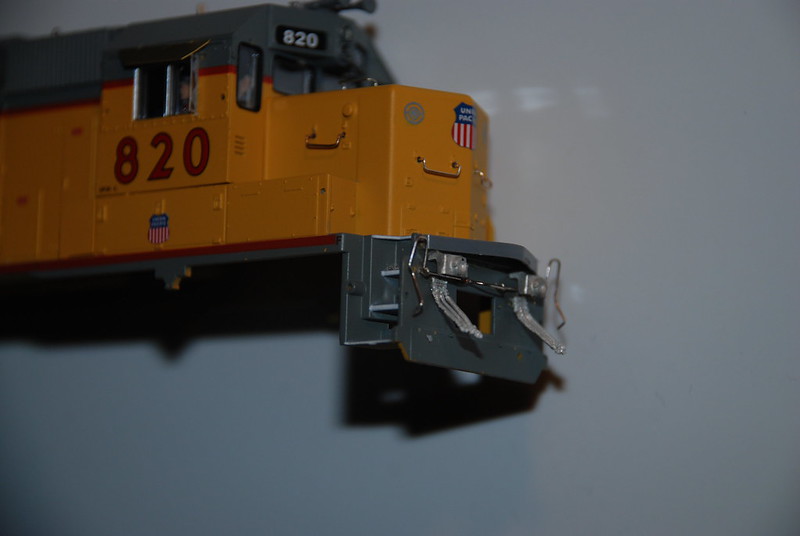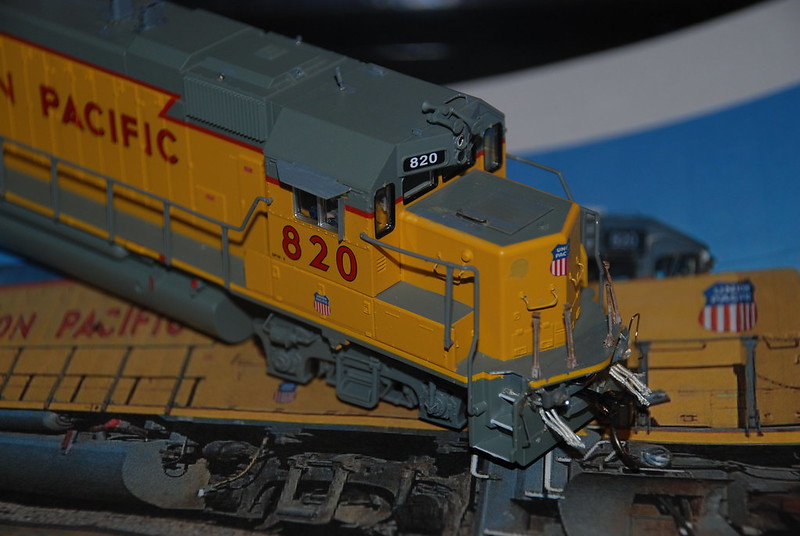As ever, when I buy a loco I check it for accuracy against a photo or two of the prototype. That showed there were a number of details that needed to be changed/modified/added/removed. The major research source for this project was:
RR Picture Archives at http://www.rrpicturearchives.net/locopi ... x?id=42798
Close examination of the photos there revealed that changes were made to this loco progressively over a period so I needed to decide what period I wanted to model it in. I decided to go for its condition in more recent times after the yellow sill stripe has been added but before the air conditioner was added to the roof as the style of it does not seem to be available as a detail part (yet). The model represents a 1981 build GP38-2, which is towards the end of the production of this model and thus it has, or should have, the later features on that model. Being a Trainman model, you cannot expect it to be too accurate but it is not bad.
Prototype v Model
The number #820 represents an ex-MP loco acquired by the UP on acquisition of MP. As far as I know it is still on the UP roster and does not seem to venture very far from Kansas City, judging by the photos of it found on RR Picture Archives. And very good pictures they are too, showing its evolution over quite a short period 2001-13. It started out pretty much as produced by Atlas but acquired yellow sill stripes at some stage and later it acquired an air conditioner unit on the cab roof. So there are two possible additions.
Comparing the model with photos I spotted four immediate differences: the later version anti-climber in a V shape (and not a drop step) as on GP50s then in production; the larger Q fans (domed) rather than 48” flat fans, four tall exhaust ports rather than two short ones, and a toilet hatch on the top of the nose. There are a few other things than can be added for greater levels of detail but see below for that. The plastic representation of a plow had to go too.
This aerial shot looking down shows the roof detail perfectly, especially the over-height exhaust ports and the bent firecracker antenna, just the like the models!
http://www.rrpicturearchives.net/showPi ... ?id=263996
I shall produce a complete list of parts used at the end as the list is likely to grow the more I get into this project - proving it is a "live" job!!!
More next time








